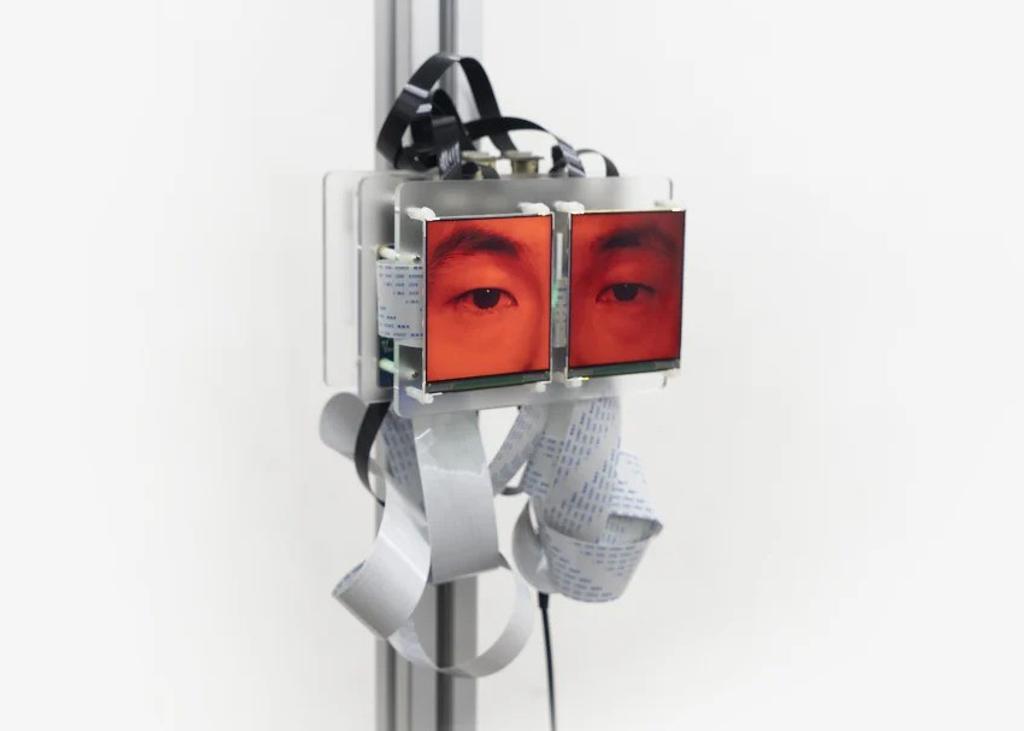Null-Object

Verbindung zu esel.at

Curated by Niklas Chou
DING SHIWEI
JING AO
MAK2
VLADISLAV MARKOV
In the context of computer programming, the “Null Object” represents a special state of absence—an unfilled pointer or uninitialized variable. The ambiguity of this absent state lies in the fact that it is by no means a simple “nothingness,” but rather a clearly defined “emptiness.” The concept of “emptiness,” with its distinctly Eastern connotations (such as its metaphysical references in Zen, Buddhism, and Taoism), articulates social atmospheres, individual conditions, and natural laws, creating an unexpected resonance between computer science and Eastern philosophy. Much like the dialectical relationship revealed in the core Koan “form is emptiness, emptiness is form,” the four artists in this exhibition—Jing Ao, Ding Shiwei, Mak2, and Vladislav Markov—address the concept of “emptiness” from different dimensions, including the body, digital ruins, virtual reality, and mechanical materiality. Their practices not only extend the exploration of “emptiness” and “negative space” in the history of Eastern and Western art but also imbue this grand proposition with new philosophical implications and critical reflections in an era dominated by technological optimism.
This exhibition also attempts to construct an interdisciplinary genealogy in pursuit of the meaning of “emptiness,” preserving the establishment of human subjectivity within the construction of meaninglessness. This approach emerged in computer science through the proposal of Bobby Woolf (1996) as an elegant way to confront the binary language of rational supremacy.[1] “Providing an object with no behavior” creatively transforms “nothingness” into a presence with clear referentiality in programming paradigms.[2] Heidegger (1927), in Being and Time, offers a profound ontological analysis of “nothingness” (Das Nichts), arguing that it is not the opposite of being but rather “the veil of being itself.”[3] Similarly, John Cage (1952), through his groundbreaking musical composition 4’33’’, conveyed that “there is no such thing as silence, only unattended sound.”[4] This perspective is further extended in Hiroshi Sugimoto’s Seascapes series, where long exposures transform the ocean into meditative images of emptiness.[5] The same idea was echoed in the surge of Eastern philosophy in the last century, as seen in Keiji Nishitani’s Religion and Nothingness: “True emptiness is not the emptiness of Nihilism but a field of infinite possibilities.”[6] Thus, through philosophical inquiry, technological progress, and art historical retrospection, an interdisciplinary genealogy and mode of viewing are reestablished to interpret the concept of emptiness.
In extending this line of reasoning, when objects in the digital age possess a reality independent of human perception, does the “Null Object” attain the status of a digital ontology? Can the posthuman landscapes hinted at by mechanical devices develop new forms of existence once technology is freed from functional constraints? Or perhaps, through the contrast between minimalist bodily movements and complex technologies, do the artists allow us to perceive the most primal state of “conscious emptiness”?[7] As a cognitive tool and medium for contemplating contemporary states of existence, the narrative space constructed by this exhibition may serve as a declaration of cognition and stance: “an alternative order that operates within society while maintaining a distance from it” (Foucault, 1967).[8]
Text by Niklas Chou with thanks to Junyao Chen
[1] Woolf, Bobby (1996), “The Null Object Pattern”, from Pattern Languages of Program Design II, edited by John M. Vlissides et al., Boston: Addison-Wesley, pp. 5-18.
[2] Ibid.
[3] Heidegger, Martin (1952), Being and Time. Translated by John Macquarrie and Edward Robinson, New York: Harper & Row, 1962.
[4] Cage, John (1961), Silence: Lectures and Writings, Connecticut: Wesleyan University Press
[5] Sugimoto, Hiroshi (2004), Hiroshi Sugimoto: Seascapes, Berlin: Hatje Cantz.
[6] Nishitani, Keiji (1982), Religion and Nothingness, Translated by Jan Van Bragt, California: University of California Press
[7] Harman, Graham (2018), Object-Oriented Ontology: A New Theory of Everything, London: Pelican
[8] Foucault, Michel (1967), “Of Other Spaces: Heterotopias”, from Architecture / Mouvement/ Continuité, Translated by Jay Miskowiec, October 1984. Paris: Publications du moniteur